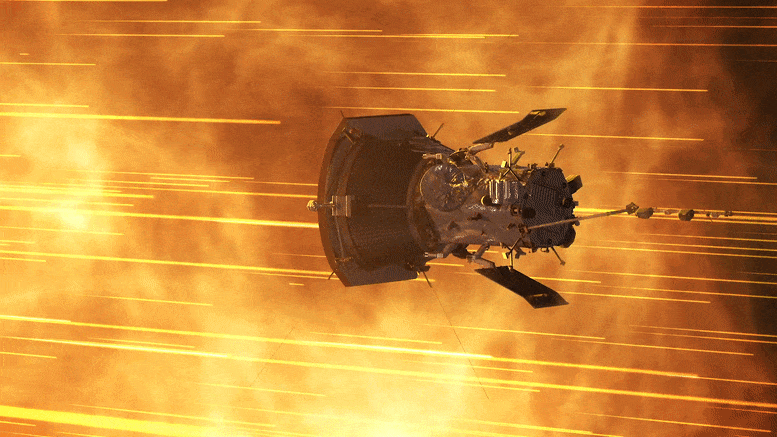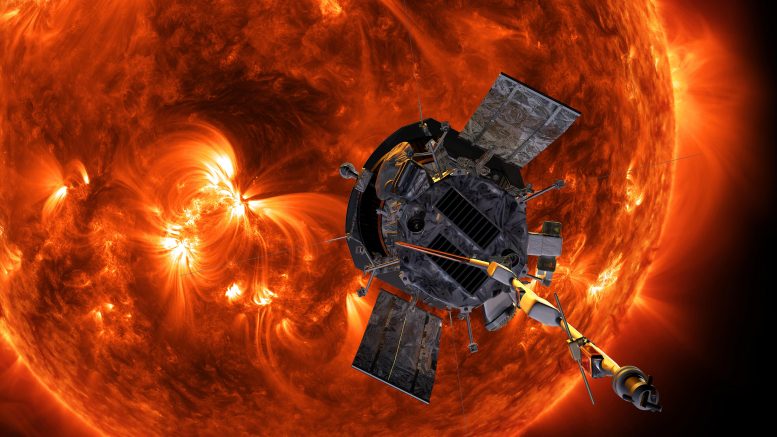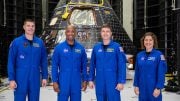
NASA’s Parker Solar Probe performed a key 4.5-second maneuver on August 3, 2023, to stay on course for its sixth Venus flyby. This adjustment is critical for using Venus’s gravity to alter its orbit around the Sun, and it sets the stage for the probe to break its own speed and solar distance records on September 27, 2023. Credit: NASA GSFC/CIL/Brian Monroe
NASA’s Parker Solar Probe executed a short maneuver on August 3, 2023, that kept the spacecraft on track to reach the aim point for the mission’s sixth Venus flyby on Monday, August 21, 2023.
Operating on preprogrammed commands from mission control at the Johns Hopkins Applied Physics Laboratory (APL) in Laurel, Maryland, Parker fired its small thrusters for 4.5 seconds. This was enough to adjust its trajectory by 77 miles and speed up its closest approach to Venus by 1.4 seconds. The precise timing and position are critical for this flyby, the sixth of seven planned approaches, where Parker will use Venus’s gravity to tighten its orbit around the Sun.
“Parker’s velocity is about 8.7 miles per second, so in terms of changing the spacecraft’s speed and direction, this trajectory correction maneuver may seem insignificant,” said Yanping Guo, mission design and navigation manager at APL. “However, the maneuver is critical to get us the desired gravity assist at Venus, which will significantly change Parker’s speed and distance to the Sun.”
Parker Solar Probe will be moving 394,742 miles per hour when it comes within just 4.5 million miles from the Sun’s surface – breaking its own record for speed and solar distance – on September 27, 2023.

Artist’s concept of the Parker Solar Probe spacecraft approaching the sun. Credit: NASA/Johns Hopkins APL/Steve Gribben
The Parker Solar Probe is a NASA spacecraft launched in 2018 with the mission to study the Sun’s outer atmosphere, or corona. It aims to gather data on the dynamics of solar wind, the magnetic fields, and the energetic particles in the corona. By getting closer to the Sun than any previous spacecraft, the Parker Solar Probe is providing unprecedented insights into how the Sun affects the solar system. Its observations contribute to our understanding of fundamental solar and space physics, which can have implications for space weather forecasting and the behavior of other stars.









Be the first to comment on "Precision in Space: Parker Solar Probe’s Course Correction Paves Way for Historic Venus Flyby"